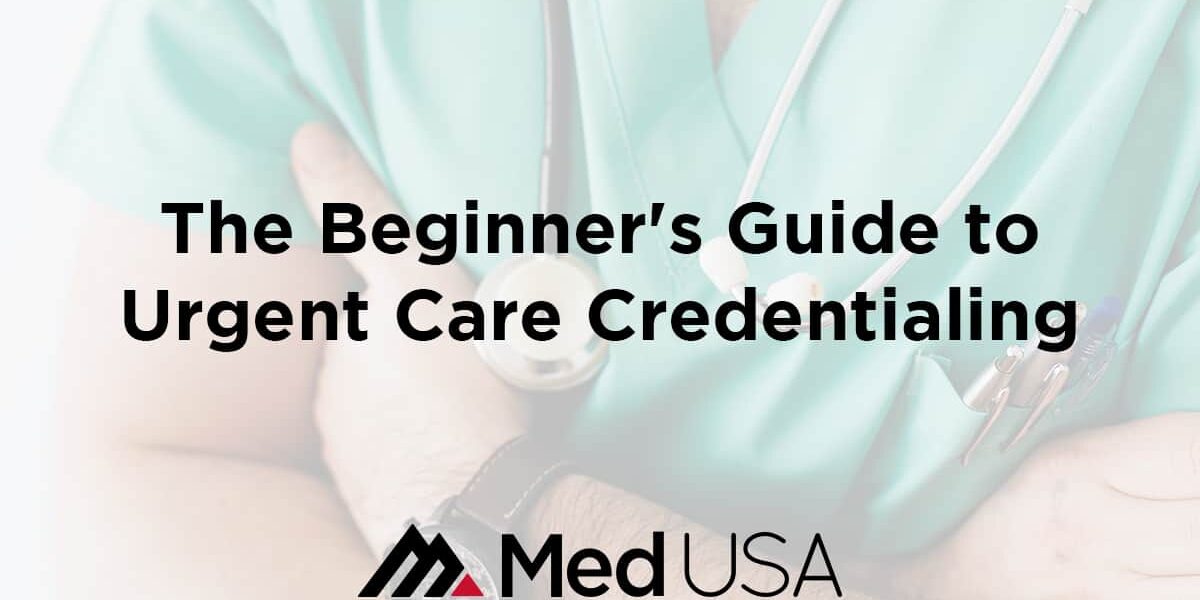
The Beginner’s Guide to Urgent Care Credentialing
Urgent care facilities must follow strict regulatory procedures, both at a federal and state level. One of the most time-consuming processes, particularly when it comes to hiring providers, is credentialing. Lags in documentation can slow the process, which means your other provider may be working long hours while waiting for a new colleague to start. Understanding the credentialing process, including the benefits of outsourcing, can help you make better decisions for your urgent care and even affect your revenue streams.
How Does the Credentialing Process Work for Urgent Care Centers?
Credentialing can have a serious impact on your organizational cash flow, especially if you don’t have a lot of experience with credentialing providers. Understandably, most urgent care centers do not, because it is not a task that they perform with regularity. Additionally, practices often lack the necessary tools to effectively manage the credentialing process. Unfortunately, mismanaging the credentialing process can lead to claim denials from non-participating or out-of-network providers. An increasing amount of government regulation and payer-specific requirements for credentialing further complicate the issue.
Basic Aspects of the Urgent Care Credentialing Process
Credentialing is essentially the process of being added onto the insurance networks and verifying a provider’s qualifications, so they can provide care and you can issue claims to insurance for the services they render. In general, the credentialing process can look something like this:
- Decide which insurance companies your urgent care wants to accept as payors.
Make a list of all insurers you will enroll with because each will have a separate process. - Obtain the provider’s Council for Affordable Quality Healthcare (CAQH) login information and ensure that he or she is enrolled.
If a provider has never been enrolled with CAQH, he or she will have to receive an invitation to join. The process can take weeks. CAQH enrollment is a requirement for accepting large insurers such as BCBS and Aetna. - Enroll in Medicaid and Medicare.
Medicare and Medicaid patients often make up a significant portion of the patient population. Failure to enroll your providers with CMS can seriously affect patient volume. - Enroll with out-of-state or regional payers.
Many people use urgent cares because they are out of town and their primary care provider is not available. Enrolling providers with out-of-state or out-of-region payors can increase your patient volume.
Required Documentation from the Provider
One of the biggest hiccups in the credentialing process is obtaining the required documentation from the providers themselves.
Examples of required documentation include:
- National Provider Identification (NPI) number
- Current Curriculum Vitae – note that most insurers, in order to complete enrollment, need both the month and year of each educational and professional entry. For example, it is not enough to say that a provider graduated from medical school in 2017, the curriculum vitae must state that the provider graduated in May of 2017
- Copies of professional state licenses and DEA licenses if the provider is certified to dispense controlled substances
- Board certification information (i.e., Board Certified, Board Eligible). If a provider is still in training (e.g., a physician in residency), then the provider must provide the name of the program director and specialty, as well as obtain a full unrestricted license separate from the training institution
- Professional liability insurance information, including disclosure of malpractice claims, if applicable
- Peer and professional references
- Names of any other facilities where the provider has privileges
- Continuing Medical Education (CME) documents, as applicable
Keep in mind that this documentation must go to each payor that is not enrolled in CAQH separately. Given the amount of documentation involved, credentialing can take anywhere from 60 days to 8 months, especially for someone not familiar with the practice. Certain aspects may cause delays in enrollment, such as a history of board action or medical malpractice claim.
The Costs of Urgent Care Credentialing
In-house credentialing has both direct and indirect costs. Direct costs include the time personnel (typically a member of a billing department) spends populating information in applications, reviewing, locating documentation from providers, signing paperwork, and responding to all requests from credentialing entities. One analysis found that the credentialing cost per provider for five different insurance companies was more than $1600.
This represents only one aspect of the true cost of in-house urgent care credentialing; the other aspect is indirect costs such as lost revenue. For a practice with relatively little credentialing experience, the process can take six months. Urgent care practices can suffer from lost revenue during this time as a result of not being able to bill for charges. Lost revenue may affect both the provider and the facility. In some cases, a provider contract may stipulate an income guarantee while the credentialing process is completed, which effectively transfers the lost revenue to the facility. This can translate to hundreds of thousands of dollars in lost revenue, assuming a six month credentialing period.
The Benefits of Outsourcing Urgent Care Credentialing
Outsourcing your urgent care credentialing can save time, money, and frustration. Consider the following benefits of outsourcing:
- You will spend less money on labor.
If you take a good look at what credentialing is actually costing your organization, it’s easy to see how labor costs can add up. Most likely, your credentialing employee also has several other job responsibilities, such as billing. These responsibilities often take priority over credentialing, which delays the process. At the same time, a heavy workload is more likely to lead to costs from overtime and increase the chance of errors that delay the process. - Outsourcing reduces your liability.
Having an inexperienced credentialing person can actually bankrupt your practice. It sounds dramatic, but it can happen. Serious errors in the credentialing process, such as ignoring a Medicare revalidation request resulting in deactivated PTANS, can pose a serious threat to your urgent care. Outsourcing reduces your practice liability and ensures your provider contracts are always up to term. - It will increase your organizational efficiency.
Aside from labor costs and liability, outsourcing also makes your business more efficient, which improves your revenue streams. Companies dedicated to credentialing utilize optimized workflows, which can shave months off the credentialing process. They are also familiar enough with the processes that they will not make mistakes that lead to delays. - Outsourcing will reduce your turnover rate. No matter how great your practice is, urgent care facilities experience a relatively high rate of turnover. Residents move on to attending positions; mid-levels switch specialties or move on to the hospital environment. When a sudden termination of employment leaves you in the lurch, it’s important to effectively fill the gap so your practice does not lose revenue.
Urgent Care Credentialing Guidelines
No standardization exists within the industry with regard to credentialing, which is one of the reasons why it can take so long. The Joint Commission, however, has some best practices it recommends to facilitate the process:
- Define the qualifications you want your providers to have (i.e., through use of job descriptions). Use these to obtain appropriate documentation (i.e., CVs).
- Decide which insurers your urgent care will accept, and then understand the credentialing processes of each payor.
- Verify organization-specific credentials and sanction information, if applicable (i.e. board of specialty, National Nurse Practitioner Data Bank)
- Obtain current DEA and malpractice certificates
Common Urgent Care Credentialing Forms
The most common forms for completing the credentialing process at an urgent care include:
- CAQH Provider Credentialing Form
- CMS enrollment forms or revalidation forms, as applicable
- Forms specific to insurers
Urgent Care Credentialing FAQs Answered
People new to the credentialing process often have many questions about how it works.
Some of the most common include:
Q: Why does the credentialing process take so long?
A: It takes so long simply because of the amount of documentation involved – though someone experienced can make the process more streamlined.
Q: What causes delays in the credentialing process?
A: Several things may delay the process, from board actions on a provider’s record to failing to submit all required documentation on time.
Q: Is CAQH registration required?
A: CAQH handles most of the large insurers, so if you want to accept some of the most common payors, you cannot miss this step.
Q: Do I have to register with CMS?
A: If your patients have Medicare or Medicaid, you must enroll them with CMS.
Q: Are there penalties for noncompliance?
A: Certain credentialing mistakes, such as failing to revalidate a provider’s credentials, could lead to denied claims, or, in the case of CMS, a deactivation of their PTAN. This could lead to serious costs that your facility will incur.
Urgent Care credentialing is an involved process that requires heavy documentation and follow up. It can be a burden for your practice to take on credentialing in house. Working with a credentialing company can eliminate errors, streamline workflows, and have a positive effect on your revenue management cycle.


